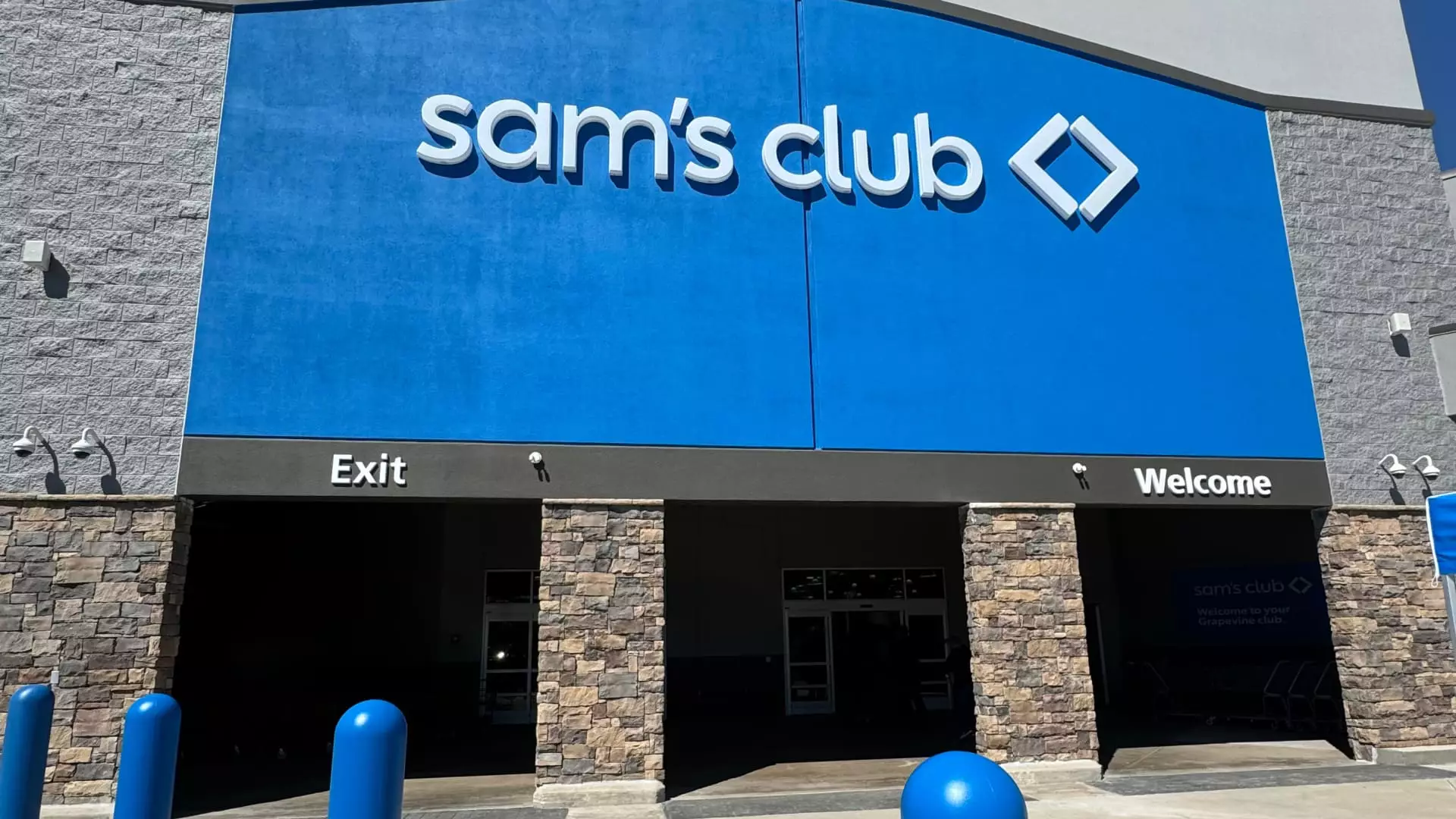The opening of a new Sam’s Club in Grapevine, Texas, marks a significant departure from conventional shopping paradigms. This latest store prototype is set to eliminate traditional checkout lanes in favor of a fully digital experience, underpinned by the innovative Scan & Go app. Customers will no longer engage with cash registers as they navigate through the aisles; instead, they will utilize their smartphones to scan products and facilitate their purchases seamlessly. This shift not only reflects changing consumer preferences but also symbolizes the broader transformation within the retail landscape where convenience and technology converge.
The aim, as articulated by Sam’s Club CEO Chris Nicholas, is to pioneer a retail future in which digital engagement is paramount. “It’s kind of the physical manifestation of a journey we’re trying to go on as a company,” he stated, highlighting how this new model serves as a prototype for future store openings nationwide. The introduction of a digital-centric model promises efficiency and speed, key attributes that modern consumers increasingly demand during their shopping experiences.
The Grapevine location is positioned as a testbed for several technological enhancements that Sam’s Club intends to scale. With a focus on e-commerce, the store design will allocate increased space for the preparation of curbside orders and home deliveries, enabling staff to fulfill online purchases efficiently. Moreover, the absence of checkout lanes aims to mitigate one of the most exasperating aspects of shopping at membership clubs: long wait times. By employing the Scan & Go function, customers can bypass lines entirely, turning what was once a frustration into a swift and streamlined process.
Sam’s Club is not merely about speed; it seeks to reconstruct the shopping environment altogether. In an innovative twist, the store will feature online-exclusive merchandise, leveraging distinct items that can enhance the overall shopping experience. For example, customers can find unique offerings ranging from an extravagant five-carat lab-grown diamond to a hefty 12-foot Christmas tree, drastically expanding the traditional inventory scope.
The dynamics of the warehouse club industry have been notably influenced by Costco’s immense success, typified by its robust revenue streams. Despite Sam’s Club’s efforts, including consolidating its private label brands and enhancing digital interactions, the scale of Costco’s operations—with revenues almost double those of Sam’s Club—remains a daunting benchmark. Nevertheless, Sam’s Club is not complacent; it is actively refining its business model to cultivate a differentiated shopping experience to attract members seeking both convenience and value.
Strategic enhancements, such as introducing in-store chefs to prepare fresh sushi, demonstrate Sam’s Club’s commitment to evolving beyond traditional bulk offerings. The integration of food automation technologies, like pizza-making robots, further exemplifies the drive to innovate and enhance customer service while also optimizing operational efficiency. These efforts are complemented by substantial employee investments, including a wage increase for nearly 100,000 workers, aimed at fostering a more motivated and engaged workforce.
As Sam’s Club seeks to redefine the membership experience, it acknowledges that customer sentiment towards technological adaptations will vary. For elements of the consumer base, particularly those unfamiliar with modern electronics, there may be hesitancy toward adopting a completely digital shopping model. Customers like Tiffany Zuniga voice concerns over potential deficiencies in customer service when technology takes precedence over personal interactions. The challenge lies in ensuring a balance where technology enhances rather than hinders the overall shopping experience.
To address this, Sam’s Club plans to maintain a robust staff presence in its stores while equipping employees with the tools to assist customers in navigating new technologies. This proactive approach aims to foster comfort among members who might feel overwhelmed by rapid technological changes. In an increasingly digital era, retaining a human element within the shopping experience is crucial for maintaining customer loyalty, especially among demographics that may still cherish conventional customer service.
As the Grapevine location prepares for its grand reopening, the unfolding strategy of Sam’s Club will likely set a precedent for future retail environments, particularly in membership-based shopping. A commitment to expanding its footprint with plans for 30 new stores over the next five years underscores the ambition behind this transformation.
With rising disposable incomes and changing consumer demographics—half of Sam’s Club’s new members belonging to Millennial or Gen Z cohorts—the retailer is uniquely positioned to capture a more extensive market share by aligning its offerings with the preferences of these younger consumers. Sam’s Club’s persistent innovations and thoughtful integration of technology into the shopping journey have the potential to create a competitive edge, challenging longstanding industry giants while simultaneously adapting to a rapidly evolving retail environment.
Through an overarching focus on e-commerce enhancements, operational efficiency, and customer service, Sam’s Club is not just aiming to meet current consumer needs—it is actively shaping the future of shopping.

